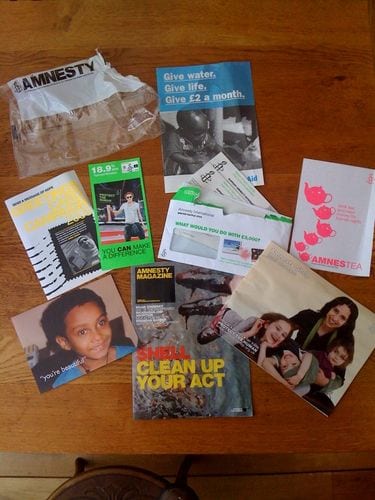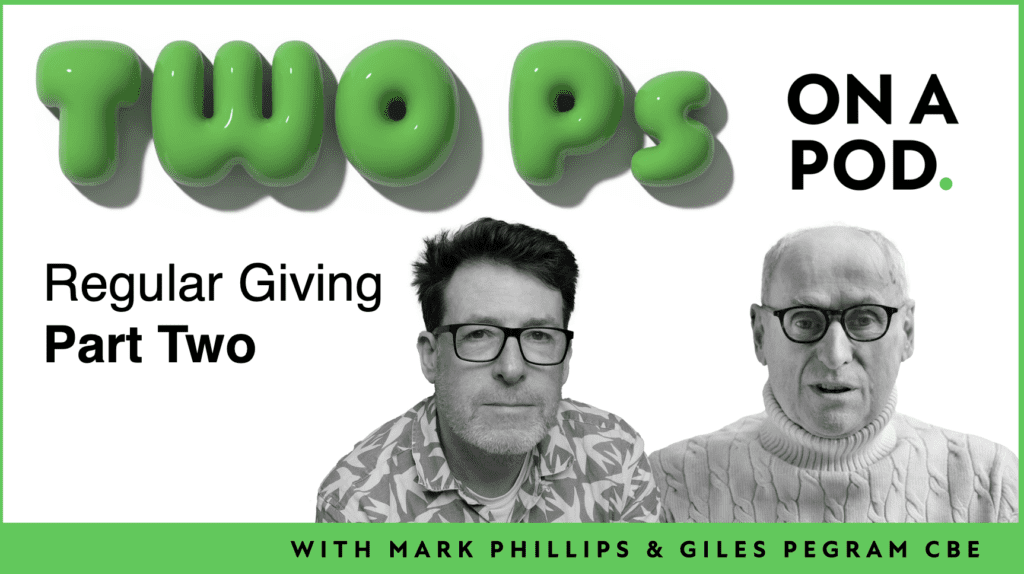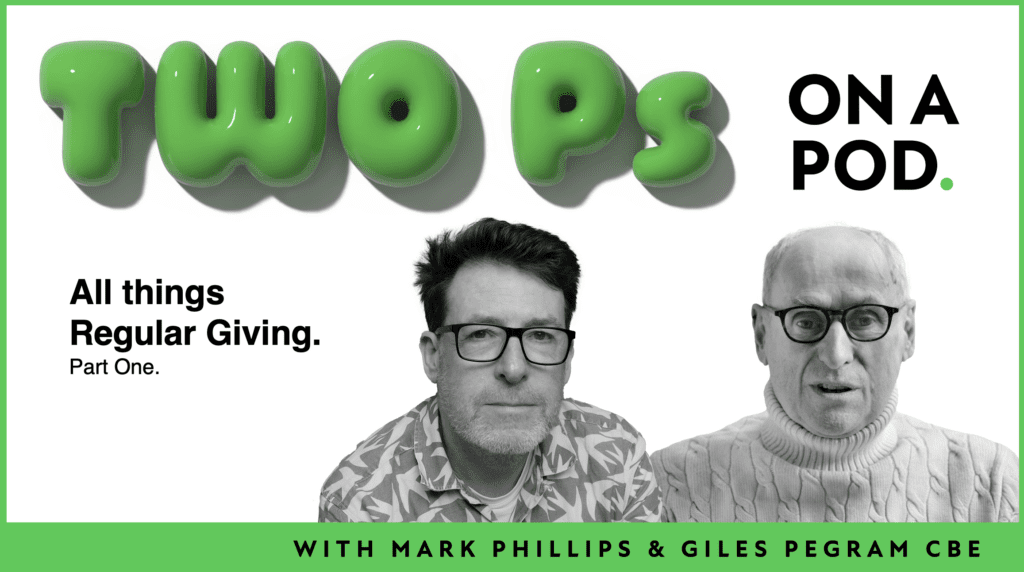The importance of donor experience in the creation of your brand
Anyone who has followed this blog over the last year will know that I re-engaged (and re-started my direct debit) with Amnesty International UK through reading the tweets of @SusanneUre from Amnesty Canada.
Yesterday I received the following in the post. One poly bag contained:
 An Amnesty Magazine (40 pages including ads for their credit card, 2009 catalogue, raffle, the AMNESTEA party, the Protect The Human Week party plus others).
An Amnesty Magazine (40 pages including ads for their credit card, 2009 catalogue, raffle, the AMNESTEA party, the Protect The Human Week party plus others).- The Amnesty Shop 2009 catalogue (40 pages).
- A DL flyer for their credit card (featuring fairground pictures of people in sunglasses brandishing Protect The Human banners) with an interest rate of 18.9% typical/variable if you are interested.
- An A5 flyer for AMNESTEA, a fundraising event that can be held “at any time”, offering me an organising kit full of ideas, invites, a poster and more!
- A separately sealed DL envelope containing a personalised letter promoting their winter raffle, a reply envelope and 20 raffle tickets (2 books).
- An A4 folded to A5 leaflet promoting their Greeting Card Campaign (it’s the one with bright yellow print on white paper and yes, it is as hard to read when its actually in your hand).
- An insert asking me to give £2 a month to WaterAid.
- An insert asking my to give £19 to Orbis.
My immediate impression of this is that they would like me to do something for them – which isn’t a problem – I just don’t know what.
Do I buy something from the catalogue (perhaps the purple tagua nut bracelet or the recycled bike chain picture frame?), sell a few raffle tickets, organise a tea party or perhaps even put a cheque in the post to Orbis?
I don’t know. The choice is bewildering. So bewildering that I’m unlikely to do anything apart from drop the lot in the recycling bin at some point in the next few weeks.
I don’t enjoy supporting Amnesty. I find it hard to engage with their approach to direct marketing. I stopped my previous direct-debit specifically because of it and only re-started it when I picked up on a story of a 13 year old girl, Aisha Ibrahim Duhulow who was stoned to death in Somalia after reporting that she had been raped.
- What happened to Aisha is just one reason that I give to Amnesty.
- What happened to James Balao, who stuck up for the indigenous people of the Philippines and disappeared last September, is another.
- What happened to Natalia Estemirova, who investigated human rights abuses in Chechnya – her dead body was found shortly after she was abducted from her home – is just one more.
I give to them because I want to help some of the thousands of normal men and women who stand up and try to make a difference only to be silenced by regimes who would rather they didn’t exist.
I don’t give to them because of their brand palette, nor because I’ve seen a photograph of a gentlemen wearing a summer scarf holding up a sign on a fairground ride, nor because they continue to reverse body copy out of black in their magazine.
I give to them in spite of all this.
They may have a strong brand identity, but the brand experience just isn’t very rewarding. This is a problem that donors to many UK charities face. I single Amnesty out only because of my recent experience and that I value their work so highly.
It is no use building a great brand strategy if the experience of being a supporter is not very enjoyable. Donors will simply come to associate your logo, corporate colours and edgy font with something unpleasant – It is something that could easily be described as counter-branding.
Shaun Smith in his book, Managing the Customer Experience describes six steps that you can create to build a donor focussed brand without doing anything to the corporate identity or the logo. By taking this approach you’ll be forced to look at what happens in your relationships with your donors rather than building your brand purely on operational values and activities.
Step 1. Ask yourself the following: who are your target customers and what do they most value? What is their current experience like? What do you do that they enjoy? What do you do that they tolerate? What do you do that they dislike?
Step 2. What promises can your brand make that would distinguish you credibly and delight your customers (or donors) during the experience? (How about taking a position of making supporting your charity enjoyable for a starter? I’ve covered this point once before, if you would like to know more take a look at this post.)
Step 3. What do you need to do to your process, people and products to deliver these promises? At this point you start getting finance, HR, donor services as well as project staff involved.
Step 4. Align your organisation with the promise.
Step 5. Communicate externally. Tell you supporters what they can expect from you.
Step 6. Measure it. Look at lower attrition, larger gifts and better response rates. Do it right and they will all follow.
As I’ve been writing this, I’ve been thinking about what I should do regarding my relationship with Amnesty International UK, and I’ve decided on two actions.
- First, I’m going to write them a very nice letter asking them not to send me so much junk and explain the reason why.
- Second, I’m going to increase my direct debit so the work I actually want to fund doesn’t have to suffer because of the cost of sending me so much unwanted stuff in their mailings. I’ll explain this too.
I’ll let you know what happens.
Thanks to Jon Edge and Andy Milligan for the info on Shaun’s work.
Tags In
The Essentials

Crack the Code to Regular Giving: Insights, Strategies, and a Special Giveaway!

‘Tis Halloween. Keep to the light and beware the Four Fundraisers of the Apocalypse!

Why do people give? The Donor Participation Project with Louis Diez.

A guide to fundraising on the back of a postcard

What does the latest research tell us about the state of fundraising?





